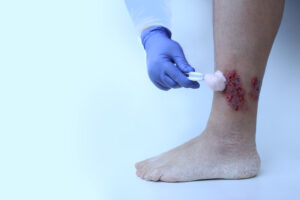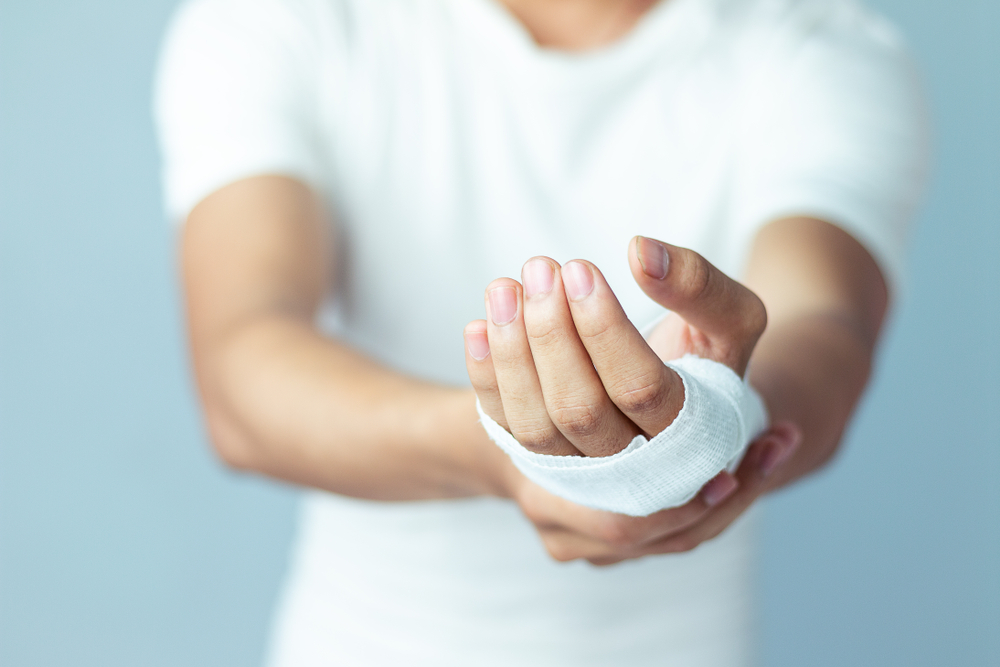When a person develops a wound, the goal is always to close that wound as quickly as possible. Otherwise, an open wound is prone to infection. This applies in particular to risk groups. In people with diabetes, wound healing is often less effective and infections are more difficult to treat and more dangerous. For these individuals, there is a great need for cost-effective solutions that actually work.
New Bandage Heals Diabetic Ulcers 30 Percent Faster
Diabetic ulcers are more common than you might think, with 15 percent of all diabetics developing chronic sores, and ultimately ulcers. Of all people with chronic wounds, about 1.5 million will develop ulcers. This contributes to a 15 times greater risk of having a body part removed in diabetics. Because diabetes can cause nerve damage that leads to deafness, people with diabetes can suffer a simple blister or minor scratch that goes unnoticed and untreated. Because high glucose levels also thicken capillary walls, blood flow slows, making these wounds harder to heal.

Researchers from the Northwestern University wanted to find out if electrical stimulation therapy could help to close these stubborn wounds. The researchers have developed a small, flexible, stretchy bandage that speeds healing by delivering electrotherapy directly to the wound site. The bandage also actively monitors the healing process and then – electrodes and all – harmlessly dissolves into the body when no longer needed. In an animal study, the new bandage healed diabetic ulcers 30 percent faster than unbandaged mice. The new device could be a powerful tool for patients with diabetes, whose ulcers can lead to various complications, including amputated limbs or even death. The research results were published in the journal Science Advances.
Healing Process Can be Better Monitored
The bandage is the first bioresorbable bandage capable of delivering electrotherapy and the first example of an intelligent regenerative system. According to the researchers, the new bandage is inexpensive, easy to apply, conformable, and efficient at wound closure to prevent infection and further complications. Despite being an electronic device, the active components associated with the wound bed are fully resorbable. The materials naturally disappear after the healing process is complete, avoiding any damage to the tissues that could otherwise be caused by physical extraction. According to the researchers, injuries can disrupt the body’s normal electrical signals. By applying electrical stimulation, the body’s normal signals are restored and new cells are attracted, which migrate to the wound bed.
The researchers and their teams developed a small, flexible bandage that gently wraps around the injury site. One side of the intelligent regenerative system contains two electrodes: a tiny flower-shaped electrode that sits directly on the wound bed, and a ring-shaped electrode that sits on healthy tissue and surrounds the entire wound. The other side of the device contains an energy harvesting coil to power the system and a near field communication (NFC) system to transmit data wirelessly in real time. The team also installed sensors that can assess how well the wound is healing. By measuring the resistance of the electrical current through the wound, doctors can monitor progress. A gradual decrease in the current reading is directly related to the healing process. So if the current stays high, doctors know something is wrong.
In a small animal model study, researchers applied electrical stimulation for just 30 minutes a day. Even this short time accelerated the closure of the wound by 30 percent. When the wound has healed, the flower-shaped electrode simply dissolves in the body, eliminating the need to remove it. The team made the electrodes from a metal called molybdenum, which is widely used in electronics and semiconductor applications. They discovered that if molybdenum is thin enough, it can biodegrade. In addition, it does not interfere with the healing process. Next, the team plans to test their diabetic ulcer dressing in a larger animal model. Then they want to test it on humans.
Burn Wounds Heal Slower
Cell biologists distinguish four phases of wound healing: hemostasis, inflammation, tissue regeneration and tissue strengthening. During the inflammation and development phase, immune cells are supposed to remove bacteria and dead cells from the wound. They also activate fibroblasts and blood vessels to begin to repair. These connective tissue cells have a circadian time measurement that gives their biological function an approximately 24-hour rhythm. For this reason, research shows that, above all, the right timing of healthcare can be essential. Depending on the injury, the extent and duration of the four phases can vary widely depending on the type of wound. Since cuts are well supplied with blood, they tend to heal effectivly. However, with burns, the blood vessels become cauterized, preventing blood from reaching the wound bed and slowing the healing process due to dead tissue that physically blocks the formation of new tissue.
Researchers from Boston University and Harvard University have developed a biomimetic model to study wound healing in burns and lacerations. They discovered that fibroblasts—usually thought of as the building cells that give shape and strength to tissues and organs—remove damaged tissue before depositing new material. This part of the healing process is slower in burns where there is more tissue damage. To study how the type of injury affects the healing rate of wounds, the team designed an in vitro model system using fibroblasts embedded in a collagen hydrogel. Wounds were created in this microtissue using a microdissection knife to mimic injury or a high-energy laser to simulate a burn. Although both wound types were the same size, laser ablation caused more cell death and tissue damage at the wound edges compared to knife wounds.
Based on these findings, therapies that promote wound healing could accelerate healing. Genetically engineered white blood cells designed to remove dead tissue could be particularly useful in reaching injured organs and tissues very deep in the body.

